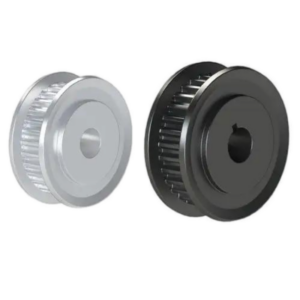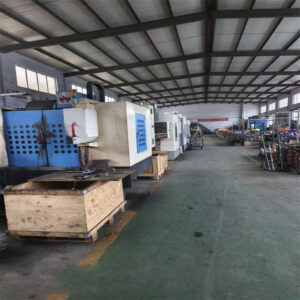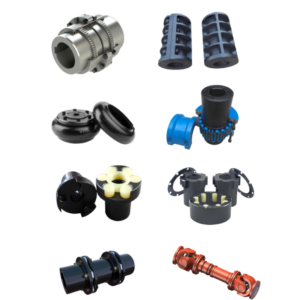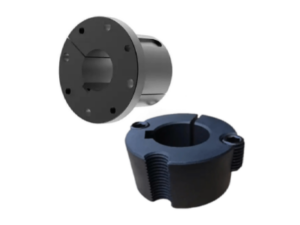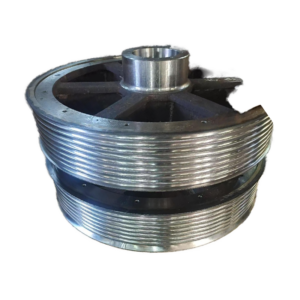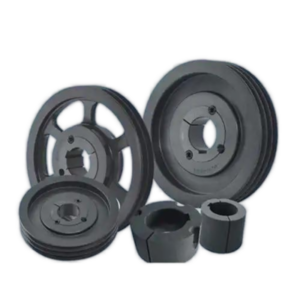Synchronous pulleys are often made from aluminum alloy for the following reasons, which balance performance, cost, and manufacturing needs:
1. Lightweight Advantage
- Reduced Inertia: Aluminum’s density (~2.7 g/cm³) is much lower than steel (7.8 g/cm³), making it ideal for high-speed applications, reducing energy loss during start/stop cycles, and improving system responsiveness.
- Lower Load: Particularly beneficial for weight-sensitive applications like robotics and automation equipment.
2. Sufficient Mechanical Strength
- Moderate Load Capacity: Heat-treated aluminum alloys (e.g., 6061, 7075) can achieve tensile strengths of 200-500 MPa, meeting the torque requirements of most synchronous belt drives.
- Optional Surface Hardening: Anodizing or hard-coating can enhance surface hardness and wear resistance.
3. Machinability and Cost Efficiency
- Easy to Machine: Aluminum’s excellent machinability allows for precise cutting of complex tooth profiles (e.g., HTD, trapezoidal), reducing manufacturing costs.
- Economical for Mass Production: Die-casting is cost-effective for large-scale production compared to steel pulleys.
4. Corrosion Resistance
- The natural oxide layer provides rust protection, making it suitable for humid or mildly corrosive industrial environments with minimal maintenance.
5. Thermal Conductivity
- Aluminum’s high thermal conductivity (~200 W/m·K) helps dissipate heat generated during operation, preventing belt degradation from overheating.
6. Application-Specific Suitability
- Common Uses: Light industrial machinery, 3D printers, medical devices, and food processing equipment where moderate speed and load are required.
- Heavy-Duty Alternatives: For high-load applications, steel hubs with aluminum spokes or coated surfaces may be used.
Key Considerations:
- Load Limits: Aluminum has lower fatigue strength; prolonged high stress may cause tooth deformation, requiring careful safety factor calculations.
- Environmental Limits: Strong acids/alkalis may require corrosion-resistant alloys or surface treatments.

